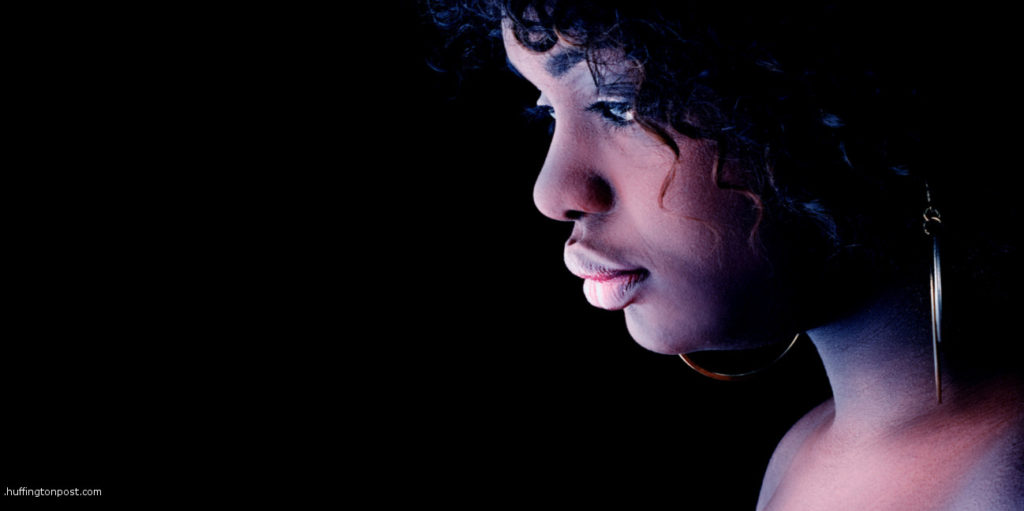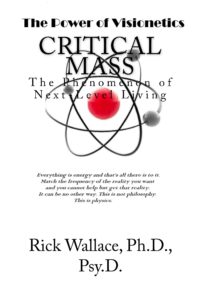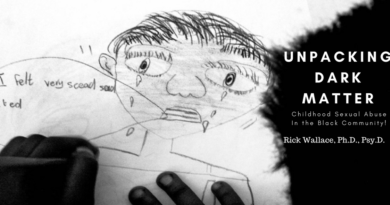Sexual Violence in the Lives of African American Women: Risk, Response, and Resilience
Sexual Violence in the Lives of African American Women: Risk, Response, and Resilience

Historical Overview: Throughout much of U.S. history, the rape of Black women was widespread and institutionalized. The legal system offered little protection and stereotypes about Black women’s hypersexuality were used to justify limited social support for Black rape victims. Black women developed a culture of silence and engaged in anti-rape organizing to cope with their victimization.
Characteristics of Black Rape Survivors: In community samples, 34.1%-65% of reported childhood sexual abuse (CSA) and 12% reported commercial sexual exploitation of children (CSEC). In student samples, 11.2% of high school girls and 14.2% of college women reported rape. In national studies, approximately 1 in 5 Black women had been raped in their lifetime. Black women who were low-income, HIV-positive, bisexual, or incarcerated were at elevated risk. Most rapes were intraracial and involved someone known to the victim: a family member, intimate partner, or acquaintance. Perpetrators used physical force, coercion, or substances to gain compliance.
Risk Factors: Poverty and revictimization were both risk factors and consequences for adult sexual violence. Being poor increased the likelihood of being raped and being raped increased the likelihood of becoming more economically disadvantaged. Among CSA survivors, 27% were raped during adolescence and 42% were raped in adulthood. Adolescent risk-taking (e.g., drug use, running away) and risky sexual behaviors (e.g., prostitution, alcohol use) increased the probability of adult rape.
Physical and Mental Health Consequences: Survivors reported both immediate and long-term physical and sexual health effects: bruises, black eyes, genital injuries, and sexually transmitted infection, which may be caused by risky sexual behavior (e.g., multiple sexual partners, less condom use). Mental health problems included posttraumatic stress disorder, depression, suicidal ideation, pain-related health problems, and low self-esteem.
Culturally Sensitive Responses: All professionals should strive to learn more about African American history, sexual assault, and historical trauma. Mental health professionals can conduct comprehensive interviews that document sexual victimization and survivors’ homes, schools, communities, and workplaces and work to create a path to recovery that is best suited to the victim’s needs. Legal professionals should be trained to recognized commercial sexual exploitation (CSEC) and endeavor to investigate sex crimes that involve marginalized Black women (e.g., those who are low-income, transgender, suffer from mental illness). Medical professionals can screen for sexual and physical victimization and document genital injuries.
Resilience: Service providers can use a strengths-based approach to help survivors heal: educating community members about sexual assault, encouraging them to use their social support network or to participate in activism, and promoting holistic healing practices.
Dr. Rick Wallace is the founder of The Visionetics Institute and the author of 20 Books that focus on healing and improving one’s position and performance in the game of life. His latest book, Critical Mass: The Phenomenon of Next-Level Living is a playbook on achieving massive success while overcoming massive obstacles in the process.
Get your signed copy of Critical Mass now!
RAPE CULTURE, VICTIM BLAMING, AND THE FACTS
WHAT IS RAPE CULTURE?
Rape Culture is an environment in which rape is prevalent and in which sexual violence is normalized and excused in the media and popular culture. Rape culture is perpetuated through the use of misogynistic language, the objectification of women’s bodies, and the glamorization of sexual violence, thereby creating a society that disregards women’s rights and safety.
EXAMPLES OF RAPE CULTURE
- Blaming the victim (“She asked for it!”)
- Trivializing sexual assault (“Boys will be boys!”)
- Sexually explicit jokes
- Tolerance of sexual harassment
- Inflating false rape report statistics
- Publicly scrutinizing a victim’s dress, mental state, motives, and history
- Gratuitous gendered violence in movies and television
- Defining “manhood” as dominant and sexually aggressive
- Defining “womanhood” as submissive and sexually passive
- Pressure on men to “score”
- Pressure on women to not appear “cold”
- Assuming only promiscuous women get raped
- Assuming that men don’t get raped or that only “weak” men get raped
- Refusing to take rape accusations seriously
- Teaching women to avoid getting raped
VICTIM BLAMING
One reason people blame a victim is to distance themselves from an unpleasant occurrence and thereby confirm their own invulnerability to the risk. By labeling or accusing the victim, others can see the victim as different from themselves. People reassure themselves by thinking, “Because I am not like her, because I do not do that, this would never happen to me.” We need to help people understand that this is not a helpful reaction.
Why Is It Dangerous?
Victim-blaming attitudes marginalize the victim/survivor and make it harder to come forward and report the abuse. If the survivor knows that you or society blames her for the abuse, s/he will not feel safe or comfortable coming forward and talking to you.
Victim-blaming attitudes also reinforce what the abuser has been saying all along; that it is the victim’s fault this is happening. It is NOT the victim’s fault or responsibility to fix the situation; it is the abuser’s choice. By engaging in victim-blaming attitudes, society allows the abuser to perpetrate relationship abuse or sexual assault while avoiding accountability for his/her actions.
What Does Victim-Blaming Look Like?
Example of Victim-Blaming Attitude: “She must have provoked him into being abusive. They both need to change.”
Reality: This statement assumes that the victim is equally to blame for the abuse, when in reality, abuse is a conscious choice made by the abuser. Abusers have a choice in how they react to their partner’s actions. Options besides abuse include: walking away, talking in the moment, respectfully explaining why an action is frustrating, breaking up, etc. Additionally, abuse is not about individual actions that incite the abuser to hurt his partner, but rather about the abuser’s feelings of entitlement to do whatever he wants to his partner.
When friends and family remain neutral about the abuse and say that both people need to change, they are colluding with and supporting the abusive partner and making it less likely that the survivor will seek support.
HOW CAN MEN AND WOMEN COMBAT RAPE CULTURE AND VICTIM BLAMING?
- Avoid using language that objectifies or degrades women
- Speak out if you hear someone else making an offensive joke or trivializing rape
- If a friend says they have been raped, take your friend seriously and be supportive
- Think critically about the media’s messages about women, men, relationships, and violence
- Be respectful of others’ physical space even in casual situations
- Let survivors know that it is not their fault
- Hold abusers accountable for their actions: do not let them make excuses like blaming the victim, alcohol, or drugs for their behavior
- Always communicate with sexual partners and do not assume consent
- Define your own manhood or womanhood. Do not let stereotypes shape your actions.
- Be an Active Bystander!
Adapted from Marshall University and Center for Relationship Abuse Awareness
DATING AND DOMESTIC VIOLENCE FACTS
FACT: Regardless of their actions, no one deserves to be physically, verbally or sexually abused. In fact, putting the blame for the violence on the victim is a way to manipulate the victim and other people. Batterers will tell the victim, “You made me mad,” or, “You made me jealous,” or will try to shift the burden by saying, “Everyone acts like that.” Most victims try to placate and please their abusive partners in order to de-escalate the violence. The batterer chooses to abuse, and bears full responsibility for the violence.
FACT: Many victims love their partners despite the abuse, blame themselves, or feel as if they have no support system or resources outside of the relationship and so they feel as if they can’t leave. Furthermore, the period immediately after leaving an abusive relationship is extremely dangerous.
FACT: Jealousy and possessiveness are signs that the person sees you as a possession. They are one of the most common early warning sign of abuse
FACT: Abuse can come in many forms, such as sexual, physical, verbal, and emotional. When a person in a relationship repeatedly scares, hurts, or puts down the other person, it is abuse. Harassment, intimidation, forced or coerced isolation from friends and family and having an independent social life, humiliation, threats of harm to you or your family or pets, threats of suicide if you leave, violating your privacy, limiting your independence and personal choices are all examples of abuse.
FACT: While the majority of victims of domestic violence are women, men may also be victims of relationship violence. Men face many of the same barriers as women that prevent them from reporting abuse, but also face a different kind of stigma since many do not believe that men can be victims of dating/domestic violence.
FACT: The majority of men and young men in our community are not violent. The use of violence is a choice. Men who use violence in their relationships choose where and when they are violent. The large majority of offenders who assault their partners control their violence with others, such as friends or work colleagues, where there is no perceived right to dominate and control.
Stating that ‘All men are violent’ places the blame for the violence elsewhere and prevents the perpetrator from being responsible for his violence. The majority of men and women want and can be allies to help in the fight against this kind of violence.
FACT: As many as one-third of all high school and college-age young people experience violence in an intimate or dating relationship. Physical abuse is as common among high school and college-age couples as married couples.
SEXUAL ASSAULT FACTS
FACT: Men, women and children of all ages, races, religions, and economic classes can be and have been victims of sexual assault. Sexual assault occurs in rural areas, small towns and larger cities. It is estimated that one in three girls and one six boys will be sexually assaulted by the age of eighteen. According to the U.S. Department of Justice, a rape or attempted rape occurs every 5 minutes in the United States.
FACT: Sexual assault is NEVER the victim’s fault. Sexual assault is a violent attack on an individual, not a spontaneous crime of sexual passion. For a victim, it is a humiliating and degrading act. No one “asks” for or deserves this type of attack.
FACT: Most sexual assaults are committed by someone the victim knows. Studies show that approximately 80%-90% of women reporting sexual assaults knew their assailant.
FACT: A sexual assault can happen anywhere and at any time. The majority of assaults occur in places ordinarily thought to be safe, such as homes, cars and offices.
FACT: Reported sexual assaults are true, with very few exceptions. According to CONNSACS, only 2% of reported rapes are false. This is the same rate of false reporting as other major crime reports.
FACT: Men can be, and are, sexually assaulted. Current statistics indicate that one in six men are sexually assaulted in their lifetime. Sexual assault of men is thought to be greatly under-reported.
FACT: Almost all sexual assaults occur between members of the same race. Interracial rape is not common, but it does occur.
FACT: Sexual assault is motivated by hostility, power and control. Sexual assaults are not motivated by sexual desire. Unlike animals, humans are capable of controlling how they choose to act on or express sexual urges.
FACT: Sexual offenders come from all educational, occupational, racial and cultural backgrounds. They are “ordinary” and “normal” individuals who sexually assault victims to assert power and control over them and inflict violence, humiliation and degradation.
FACT: Anytime someone is forced to have sex against their will, they have been sexually assaulted, regardless of whether or not they fought back or said “no”. There are many reasons why a victim might not physically fight their attacker including shock, fear, threats or the size and strength of the attacker.
FACT: Survivors exhibit a spectrum of emotional responses to assault: calm, hysteria, laughter, anger, apathy, shock. Each survivor copes with the trauma of the assault in a different way.
Adapted from Connecticut Sexual Assault Crisis Services (CONNSACS)




